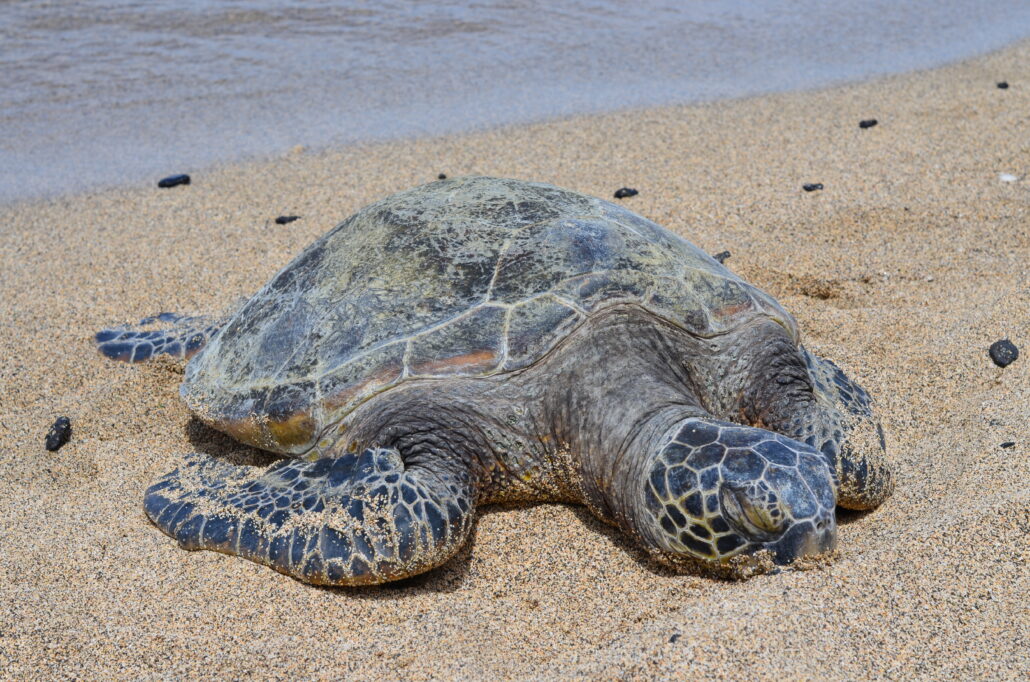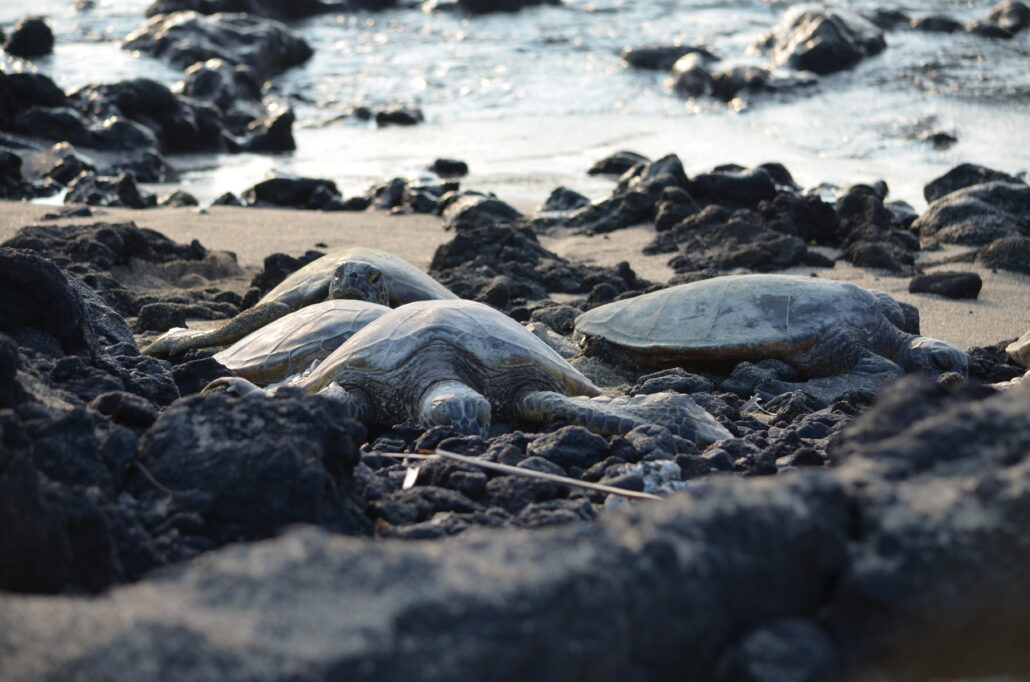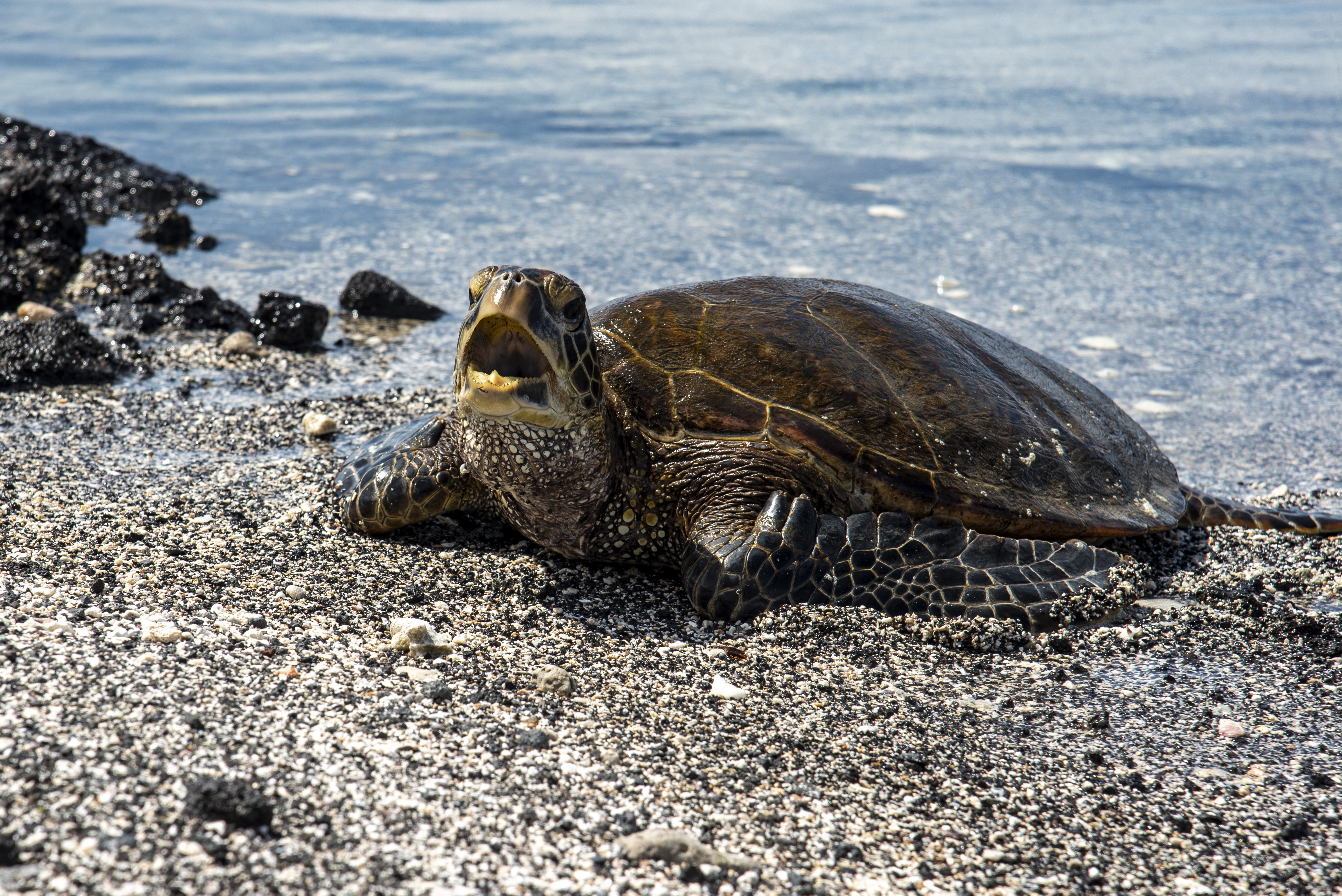If you’re planning a trip to the Big Island of Hawaii, there’s one experience that feels almost magical: spotting sea turtles in their natural habitat. Known in Hawaiian as honu, these gentle creatures are not only symbols of good luck and longevity but also an essential part of Hawaiian culture and marine ecosystems. The Big Island offers some of the best opportunities in all of Hawaii to see sea turtles both on land and in the water.
In this guide, we’ll explore the best places to see sea turtles on the Big Island, from sunny resort beaches to rugged lava shorelines. Along the way, you’ll also learn fascinating facts about these ancient creatures, how to respectfully observe them, and why protecting them is so important.
Meet the Honu: Hawaii’s Green Sea Turtle
The most commonly seen sea turtle in Hawaii is the Hawaiian green sea turtle (Chelonia mydas). Despite their name, they aren’t actually green on the outside—their shells are typically brown with shades of gold and black. The “green” refers to the color of their body fat, caused by their diet of algae and seagrass.
A few key facts about Hawaiian green sea turtles:
- Ancient mariners: Sea turtles have existed for more than 100 million years, making them one of the oldest living species on Earth.
- Diet: Juveniles eat jellyfish, crabs, and small fish, but adults are primarily herbivores, grazing on algae.
- Behavior: They spend much of their time feeding in shallow reefs but will haul out onto sandy beaches or lava rocks to bask in the sun—a rare behavior among sea turtles worldwide.
Most importantly, Hawaiian green sea turtles are a protected species under both federal and state law. They are listed as threatened under the U.S. Endangered Species Act. This means it’s illegal to touch, chase, harass, or feed them. Respectful observation ensures their continued survival and allows visitors to enjoy them for generations to come.

How to Respect Sea Turtles in Hawaii
Before diving into where to see them, it’s important to know how to interact responsibly:
- Keep Your Distance: By law, you must stay at least 10 feet (3 meters) away from turtles on land or in the water. Give them space to breathe, rest, and feed without stress.
- Never Touch or Ride Them: Turtles may seem calm, but human contact can spread harmful bacteria or disrupt their behavior.
- Don’t Feed Them: They have a natural diet, and human food can make them sick.
- Use Reef-Safe Sunscreen: Many turtles feed on algae that grow on coral reefs. Protecting reefs protects their food source.
- Observe Quietly: Splashing, chasing, or crowding turtles can scare them. Patience and calmness often result in the best sightings.
- Look, Don’t Block: If a turtle is coming up to breathe, don’t hover above it. Allow it a clear path to the surface.
By following these guidelines, you’ll ensure a safe and meaningful encounter for both you and the honu.

Best Places to See Sea Turtles on the Big Island
Now, let’s explore the top spots around the island where you’re most likely to encounter sea turtles.
1. Anaehoʻomalu Bay (A-Bay)
Located in the Waikoloa Beach Resort area, Anaehoʻomalu Bay—lovingly called A-Bay—is one of the most popular and accessible places to see sea turtles. The calm, sandy-bottomed lagoon makes it a favorite for swimmers, snorkelers, and sunset watchers alike.
Sea turtles often gather in the small coves on either side of the bay. It’s not unusual to see a dozen or more turtles feeding in the shallow waters or resting along the lava rocks that frame the beach.
Why A-Bay is a great turtle spot:
- Easily accessible, with parking and facilities nearby.
- Clear waters for snorkeling, with fish and coral as added bonuses.
- A perfect sunset location, where turtles often return to rest.
If you’re staying at Waikoloa Beach Resort, this could easily become your daily turtle-viewing spot.
2. Puako Shoreline
Stretching for several miles along the Kohala Coast, Puako is a hidden gem when it comes to turtle sightings. The shoreline is dotted with tide pools, lava rock formations, and small sandy beaches.
Because of its rich coral reef system, Puako provides an abundant food source for turtles. Whether you’re snorkeling, kayaking, or just walking along the rocky shoreline, there’s a good chance you’ll spot honu grazing on algae or basking on the warm lava.
Highlights of Puako turtle watching:
- Multiple access points to the ocean.
- Fewer crowds compared to resort beaches.
- Great opportunities for both snorkeling and shoreline exploration.
Pro tip: Visit Beach 69 (Waialea Bay) or Puako Beach Drive for some of the best entry points to turtle-friendly waters.
3. Kahaluʻu Beach Park
Located just south of Kailua-Kona, Kahaluʻu Beach Park is a beloved snorkeling spot where turtles are practically guaranteed. The sheltered bay has calm waters, making it ideal for beginners and families.
The real attraction here is the thriving population of sea turtles that come to graze on the algae growing along the rocks. Snorkelers often find themselves swimming alongside these graceful creatures, who seem unfazed as long as you keep a respectful distance.
What makes Kahaluʻu a standout:
- Easy, safe snorkeling with rental gear available nearby.
- Educational signs around the park that explain how to interact responsibly.
- High turtle density—chances of spotting one are extremely high.
Kahaluʻu is also home to community volunteers who sometimes monitor the area to ensure turtles are treated respectfully, making it a great place to learn about conservation.
4. Punaluʻu Black Sand Beach
On the southern coast of the Big Island lies one of Hawaii’s most famous beaches: Punaluʻu Black Sand Beach. Its unique shoreline, created by volcanic activity, provides a dramatic backdrop for turtle watching.
Here, turtles often haul out of the water to bask directly on the warm black sand, creating postcard-worthy scenes. This is one of the most reliable places to see turtles on land rather than just in the water.
Why Punaluʻu is unforgettable:
- The striking contrast of black sand, turquoise waters, and green sea turtles.
- Easy access with parking and restrooms available.
- Opportunity to combine turtle watching with a scenic drive around the island’s southern coast.
Remember: While it may be tempting to get close for a photo, please respect the 10-foot rule. Rangers and volunteers sometimes patrol the area to protect the turtles.
5. Kīholo Bay
A little off the beaten path, Kīholo Bay is a pristine natural area known for its turquoise waters, lava rock formations, and—of course—sea turtles.
The bay is part of a protected marine area, and it’s common to see groups of turtles basking on the lava rocks or swimming in the sheltered waters.
Why Kīholo Bay is worth the trip:
- Consistently high chance of turtle sightings.
- Less crowded than resort beaches, offering a peaceful experience.
- Excellent photo opportunities with turtles against lava rock backdrops.
The bay requires a bit of walking to reach, so wear sturdy shoes and bring water. The effort is rewarded with one of the most natural and unspoiled turtle habitats on the island.
6. Kaloko-Honokōhau National Historical Park
Just north of Kailua-Kona, this national park blends cultural history with natural beauty. The park preserves ancient Hawaiian fishponds and petroglyphs, while also serving as a haven for wildlife—including sea turtles.
Turtles can often be seen grazing in the shallow waters of the fishponds or resting along the beach. The park is staffed by rangers who help enforce conservation laws, reminding visitors to give turtles their space.
Why this park is special:
- Unique mix of cultural history and natural turtle habitat.
- Reliable sightings in both water and on land.
- A peaceful, educational stop that feels more intimate than touristy beaches.

Tips for Turtle Spotting Success
While turtles are commonly seen, keep these tips in mind to increase your chances:
- Go Early or Late: Turtles often bask in the morning or late afternoon.
- Look at the Rocks: Sometimes turtles blend into lava rocks when basking—watch closely.
- Be Patient: Sit quietly and wait; turtles often surface every few minutes to breathe.
- Snorkel Calmly: Gentle movements in the water make turtles more likely to stay near you.
Why Seeing Turtles Matters
For many visitors, seeing a sea turtle in Hawaii is the highlight of their trip. But beyond the excitement lies a deeper message: these animals represent resilience, balance, and the need for stewardship.
Hawaiian culture considers the honu a guardian spirit, or aumakua, offering protection and guidance. Today, their survival depends on our collective respect and conservation efforts. Every responsible visitor plays a role in ensuring these creatures thrive.
The Big Island of Hawaii is one of the best places on Earth to see sea turtles in the wild. From the resort shores of Anaehoʻomalu Bay to the dramatic black sands of Punaluʻu, each location offers a unique way to encounter these remarkable animals.
When you meet a honu, take a moment to simply watch, breathe, and appreciate the gift of sharing space with an ancient mariner. With respect and care, you’ll walk away with memories that last a lifetime—and the satisfaction of knowing you contributed to their protection.
So grab your snorkel, pack your reef-safe sunscreen, and set out on a turtle adventure you’ll never forget.
